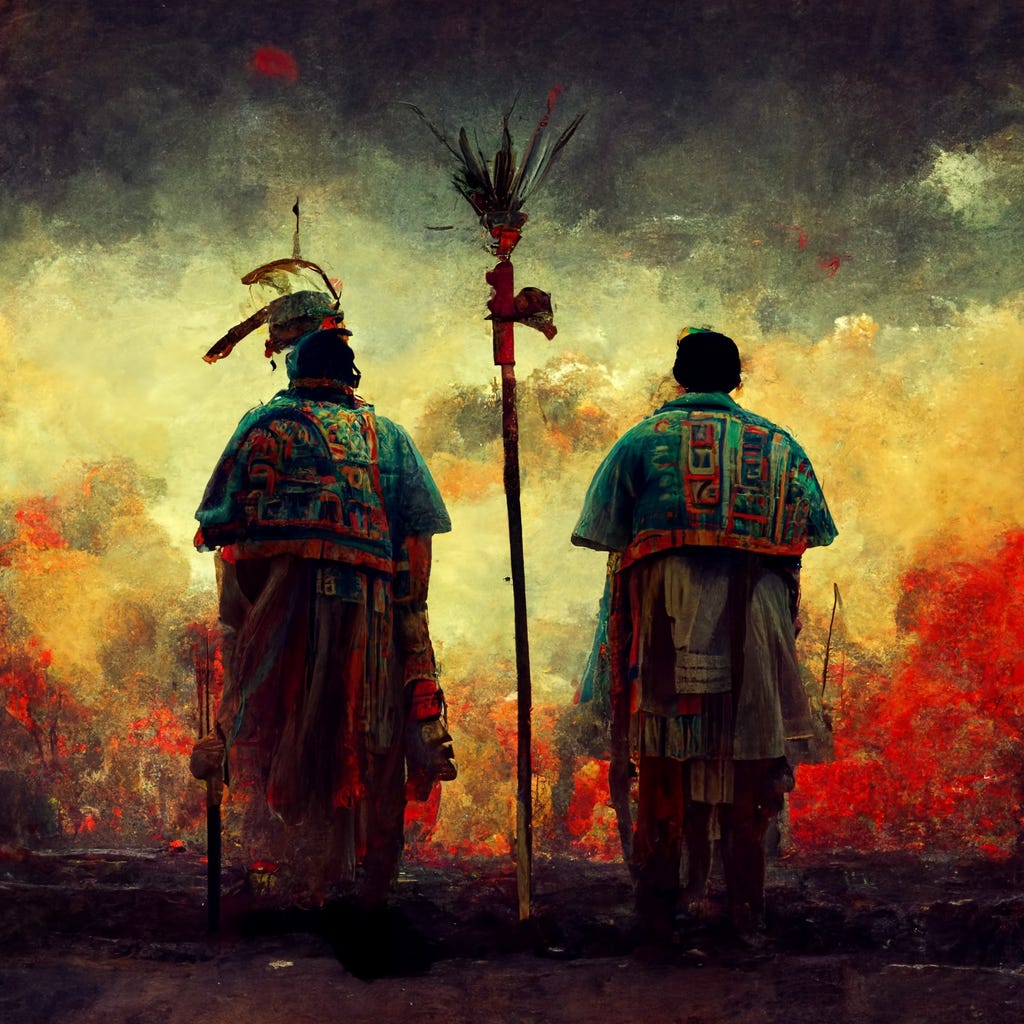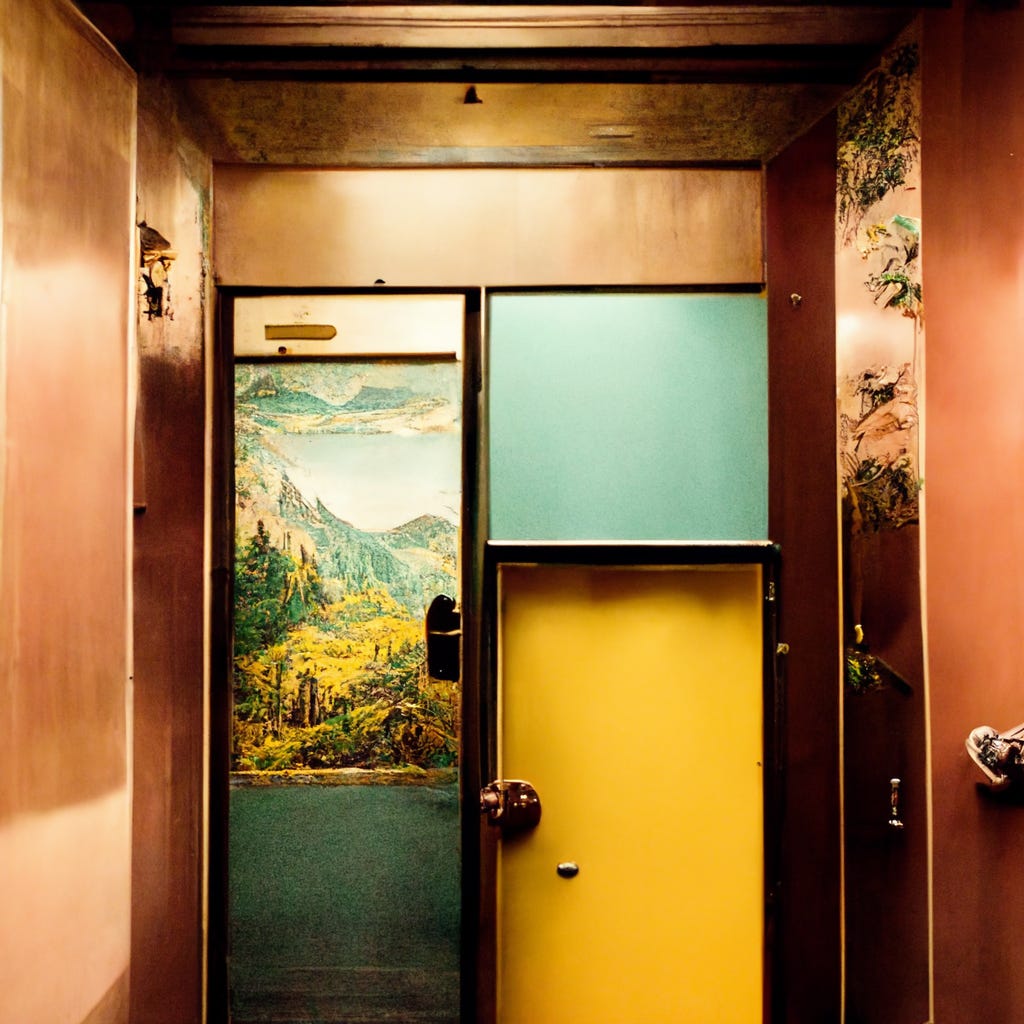A.I. Has Changed Art Forever
But does artificial intelligence compete with or enhance artists?
A.I. art has exploded over the last few weeks. Where this goes, no one can say. But it’s clear that we are at the beginning of a new chapter in the story of mankind and art.
Although the creators of programs like Midjourney and Dall-E 2 have been working quietly on these programs for years, they reached a tipping point in the last few weeks.
First, Cosmopolitan published the world’s first AI-designed cover in June. Then AI artist Jason Allen won a blue ribbon at Colorado State Fair’s annual art competition with his piece, “Théâtre D’opéra Spatial,” receiving swift backlash from traditional artists who accused him of cheating.
But is this cheating? Or is the rapid advancement of artificial intelligence changing our lives in a way that suddenly feels very tangible and visible?
To find out, I spent the last week diving into all things AI Art.
My Journey with Midjourney
A week ago, I was given an invite to experiment with the AI Art Generator Midjourney, which is still in Beta but has been open to the public for weeks. A friend suggested that I would enjoy playing with it and forwarded me an invite. I made an account, and emerged from my AI Art K-Hole a week later. Here’s what I found.
A.I. art generators like Midjourney and Dall-E 2 work by using AI to interpret the intersection of language and image, a process known as “diffusion.” That is, they are learning how to turn descriptive sentences into visual representations.
Their creators have trained these algorithms by feeding them millions of images and then teaching them how to recognize patterns between the images so that they are able to generate original images in the same style.
Midjourney is still in beta, so the program works via the Discord messaging app (which is far from convenient). But after just a few months it’s already the largest chat room on Discord, with 2 million members - double that of the next largest room (Minecraft).
A trail account gives you 25 chances to create art by messaging directly with the Midjourney Bot using the prompt: /imagine:
Then you just type whatever your mind comes up with and wait for the bot to send you back four images based upon your text prompt. You can then chose to either create variations on these four images (to create four more variations of each) or to ‘upscale’ your favorite image to produce a finer render.
The only limit is your imagination.
I started off with something practical. I needed an image to promote our book club discussion of Pedro Paramo and didn’t want to reuse my previous photo of me holding the book. So I decided to use Midjourney to generate something evocative of the story’s rich magical realism - a city of ghosts.
So I typed in /imagine: Day of the Dead in Comala, Mexico, created variations on my favorite designs, and in less than a minute I had these stunningly realistic portraits.
This piqued my imagination of what was possible. I thought of an image that had come to mind while I was writing about the subject of remote worker gentrification in Mexico City. In trying to describe why the new arrivals were being called ‘invaders’ and ‘colonizers,’ I had an intuitive feeling that it was connected to the deep psychic wound of the fall of Tenochtitlan to the Spanish.
On the 501st anniversary of the Aztec capital’s fall, I had a vision of the pain of the ‘guerrero vencido’ or ‘vanquished warrior’ that seems to still permeate much of the Mexican psyche. But lacking the technical skills to paint it visually, I tried to describe it in writing.
But with Midjourney, I was able to use this descriptive writing to generate an image and then iterate it until I had something stunningly close to the sentiment I had envisioned. Sure, there are historical inaccuracies in some aesthetic details, but the mood and message of the image was effectively conveyed.
This immediately excited me, because I’ve always had a powerful imagination that has outstripped my technical skills in expressing my ideas. But now, I was suddenly playing with a tool that required few technical skills beyond my talent for descriptive writing. A.I. can make poets into artists.
Then I started to really play around. I quickly found that the most exciting pieces came from unexpected combinations - like the past and the future. I reimagined PanAm as an intergalactic spaceline. I imagined Allen Ginsberg at Burning Man. I cross-dressed William Burroughs with Frida Kahlo.
But Midjourney doesn’t just respond to text-based prompts. You can also upload existing images. So I started feeding the AI my own film photography stills, trying to use an image of my girlfriend to create further designs. Instead, it seemed to isolate the component parts of the images and reassemble them in unexpected ways.
I learned that this works better for some images than others. I fed the software images of my favorite art deco buildings and created cool abstract designs.
This made me realize the power of curate images before feeding them into the AI. And then I started uploading images of my own collages, which are naturally full of my favorite imagery.
That’s when things got wild.
My collages of old maps, leather-bound books and sketches from Jules Vernes novels produced stunning images of steampunk futurism, unexpectedly merging the imagery from within the books with the book pages themselves, creating a sea of pages.
Images culled from Carlos Castaneda books led me down a path to create some breathtaking psychedelic art that felt plucked straight from Jungian psychology.
I continued to play with Midjourney all weekend, shifting mostly to feeding interesting images into the AI in order to produce original images. Hours passed by as I slipped into a state of deep flow, creating hundreds of images in just a few days.
AI: The Artist’s Competitor or Collaborator?
When I finally stepped away from Midjourney, I realized how much value is being created by this technology. But as with many new technologies, its arrival brings both promise and peril. While many artists are understandably scared of losing their jobs to this competition, I think there is immense potential for collaboration.
The debate around AI and Art is part of a larger question about how atomization and machine learning will disrupt work (and life) as we know it. But as historian Yuval Noah Harari has pointed out, these fears have been present since the Luddite revolt during the Industrial Revolution. Time has shown that jobs haven’t been lost to new technologies so much as transformed.
But also Harari notes that this time it may be different. So I returned to his most recent book, 21 Lessons for the 21st Century to revisit the chapter Work: When You Grow Up You Might Not Have a Job. Here’s the gist of it.
Humans have two types of abilities - physical and cognitive. The first wave of industrialization largely replaced physical tasks, which were replaced with service industry jobs where humans could use cognitive skills like learning, analysis, communication, and understanding human emotions.
Crucially, the promise of AI isn’t just about computers becoming faster or smarter so much as it’s about their growing ability to understand human emotions better than most humans can. They do this by identifying patterns in body language or biochemical information from medical devices or even your Apple Watch sensors.
Harari argues that art is less susceptible to disruption from AI than most jobs because it relies so much on human emotion. Sure, machines can make cool images, music or text, but can they reach us on the emotional level that makes us human?
That is the big question. Yes, the images created by AI Art Generators is certainly impressive. The detailed pictures generated by a dozen keystrokes and a few seconds of computing time would take a human years of technical training to achieve. But are these programs able to achieve the emotional resonance of a painting like Guernica or a story like Shantaram?
I don’t think so - at least not yet.
But A.I. does have the power to turn everyone into an artist. These tools will undoubtedly unleash a huge torrent of creativity from unexpected places. Graphic designers who went to art school might feel threatened, but so did painters when the camera was invented. For years, it was seen as a ‘false art' until it was eventually respected as a tool and an art form in its own right.
These losses will certainly be outweighed by those who don’t have an art degree but do have a cell phone. Who knows what creativity we will see come from the slums of Mumbai or rural villages in the Congo? Tools like these seem to finally give weight to Thomas Friedman’s famous dictum: The World is Flat.
What does a ‘flat world’ look like? It means that opportunity to compete in the global economy is more evenly distributed across borders and between classes. Trained artists will be on more equal footing with raw talent.
But it also means that working creatives like me can use these tools to enhance our existing skills. For instance, I can easily generate visual accompaniment to my writing, to flesh out storyboards or brainstorms ideas for branding. I could even use an AI program to write out the first drafts of my newsletter so I can edit rather than create from scratch.
Many will probably see this as cheating. But a decade of working on social media has taught me to adapt or die. That doesn’t mean blindly diving into every single trend. It means having a clear-eyed vision of our changing world and adapting accordingly.
Personally, I believe that this will create immense prosperity and productivity for the world. But as Professor Scott Galloway recently remarked on the Pivot podcast, whenever humanity discovers a technological boon that creates immense wealth, it inevitably creates unexpected side effects.
Galloway cited the discovery of fossil fuels as the single greatest creator of human wealth in recent history - but now we all know the costs that were not yet visible at the time of their discovery. I would say the same for A.I.
The benefits are clear - the timeless quest to free humanity from labor. But we are just beginning to understand the costs.
If you enjoyed this article, please consider subscribing or upgrading to a paid subscription to continue supporting my work.
And so, until we are all replaced by super-intelligent-hyper-artistic machines, I remain,
Your friend,
Marko Ayling










Just wow. I've been in this "blessing or curse conversation with a young friend, this helps me see his excitement.
What an absolutely fascinating question. And I mostly think it's going to be a good -- if disruptive -- thing. I'm certainly eager to play around with it using my own photos.
But I do wonder about this sentence: But A.I. does have the power to turn everyone into an artist.
Is that actually true? Is giving AI some words describing what you're going for and then having it do the work make you an artist? Or is the AI the artist? Or is it a collaboration? You're creating your own iterations certainly moves it more in that direction.
As I said before, I'm not anti-AI and I certainly don't want to align with modern Luddites.
And I suppose what I think doesn't much matter as this genie is definitely out of the bottle.